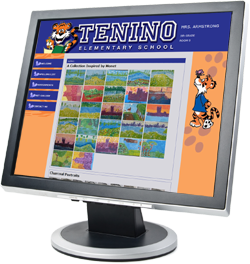In the 21st Century, we are all about the Web. It truly can be one of the easiest, most effective ways to communicate with parents, students, and the community. That is, if it is done right. Some schools require staff members to keep updated Web sites, but may not give all the direction you need to make your site as effective as it could be. So once you’ve started your own class site, what’s next?
One of the first steps in developing your own effective Web site is to create a series of short articles that will stay on your site. These articles and blurbs will give your audience background information on you and your classroom expectations but won’t necessarily need to be updated on a regular basis. Some suggestions:
- A biography. Give a brief work history, focusing on the skills and education that make you a good teacher. Also include some personal information, such as your family, interesting places you’ve visited, and future goals. Be sure to keep this informal and conversational.
- Class rules and expectations. Education experts typically suggest you develop a set of positive expectations and rules with your students. Whether you do that or set the rules yourself, make sure they are posted on your site.
- Suggested reading list. Remember that your students are all at different reading levels so include recommended titles for below-level to above-level students. Your district’s reading program is a great place to start. Many include reading lists relating to the theme you are studying.
- Homework policies. Be sure to post general homework information for parents and students. Do you accept late work? How often will students get homework? How much time will students spend on homework each night?
- Link to your school’s Web site. Parents need to know where to get more information about the school as a whole. A link to the school’s Web site will give them that.
- Link to your e-mail. Let parents and students know that you are available and willing to answer questions. Many teachers find e-mail the best way to communicate because it allows them to respond to inquiries on their own time. Just be sure to check your e-mail often!
This is just a starting point in having a useful communication vehicle with students, parents, and the community. The next step is to develop pieces that will change regularly, including homework and spelling lists, student spotlights, and upcoming events. What are some things you find valuable to include in your own class Web site? Stay tuned! Also check out some tips to keep your Web site reliable and user-friendly.









